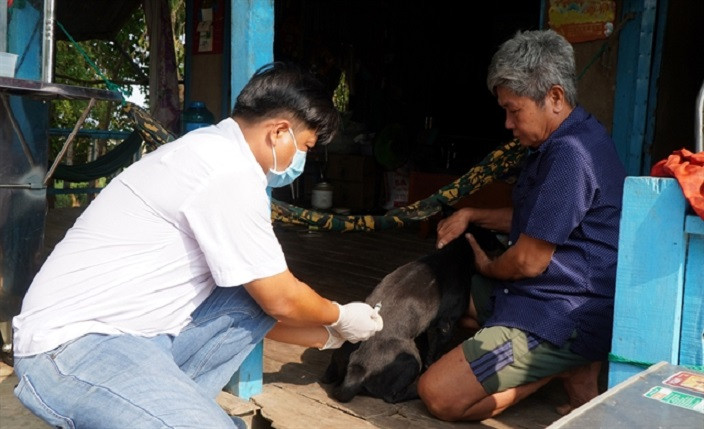
During the hybrid conference held jointly by the Ministry of Health and the Ministry of Agriculture and Rural Development, Deputy Minister of Health Nguyễn Thị Liên Hương highlighted that Việt Nam stands as one of the focal points for infectious diseases, including those transmitted from animals to humans.
She underscored that over 70 per cent of dangerous and emerging diseases are either animal-transmitted or have genetic origins from animal diseases.
Hương said many dangerous and emerging diseases have occurred worldwide as well as in Việt Nam over the past two decades, causing serious human health impacts and significant socio-economic consequences for countries, especially developing ones.
A significant portion of these diseases are transmitted from animals to humans, such as the plague, SARS, avian influenza A/H5N1, influenza A/H1N1, MERS-CoV, Ebola, and most recently COVID-19.
Many diseases transmitted from animals to humans have significantly affected people’s health, such as rabies, avian influenza A/H5N1, streptococcus suis infection in humans, anthrax and leptospira.
Hương said due to the source of diseases originating from animals, regular interdisciplinary coordination among relevant authorities is necessary to prevent and control them.
Deputy Minister of Agriculture and Rural Development Phùng Đức Tiến stated that the irregular weather conditions, extensive border lengths, trade exchanges and small-scale slaughtering practices are among factors contributing to disease outbreaks.
Avian influenza has reappeared after more than eight years without human cases. Since 2022, there have been two new human cases recorded, including one death this March.
Since the beginning of this year, there have been 27 deaths due to rabies, an increase of 16 cases compared to the same period last year. The number of 2023 was 82. These are warning signs of complex developments of diseases this year.
Tiến also said that in the first two months of 2024, over 143,000 people have received rabies vaccinations.
“Rabies is the disease with the highest mortality rate. It also causes economic damage, consuming VNĐ800 billion annually just for vaccines and rabies immune globulin for humans alone, not to mention the burden of wound treatment costs and indirect costs,” he said.
However, Tiến also mentioned people's reluctance to receive rabies vaccinations due to various side effects, leading to the use of unapproved treatments.
“Despite multiple warnings from health authorities, more than 16 per cent of rabies-exposed patients have been treated with traditional herb medicine. Another reason is that 8.2 per cent of dog bite victims cannot afford rabies vaccinations, especially the poor and those living in remote areas, as the cost of rabies vaccine is relatively high, ranging from VNĐ1.2 to 1.5 million,” he said.
In addition, the low vaccination rate among dog and cat populations has led to an increase in animal diseases, raising the risk of transmission to humans. Some areas in the Central Highlands region recorded less than 10 per cent of dogs and cats being vaccinated against rabies.
Many areas still allow stray dogs and cats, increasing the risk of attacks on humans, he added.
At the conference, health experts requested people’s committees to direct units and localities to fully implement disease prevention and control measures.
Local authorities should mobilise the participation of committees, departments and organisations in paying attention to zoonotic diseases. They should also allocate funds and human resources to implement disease prevention and control activities to protect public health, safeguard livestock, ensure the safety of poultry food supply and promote poultry exports and poultry products, they said. VNS